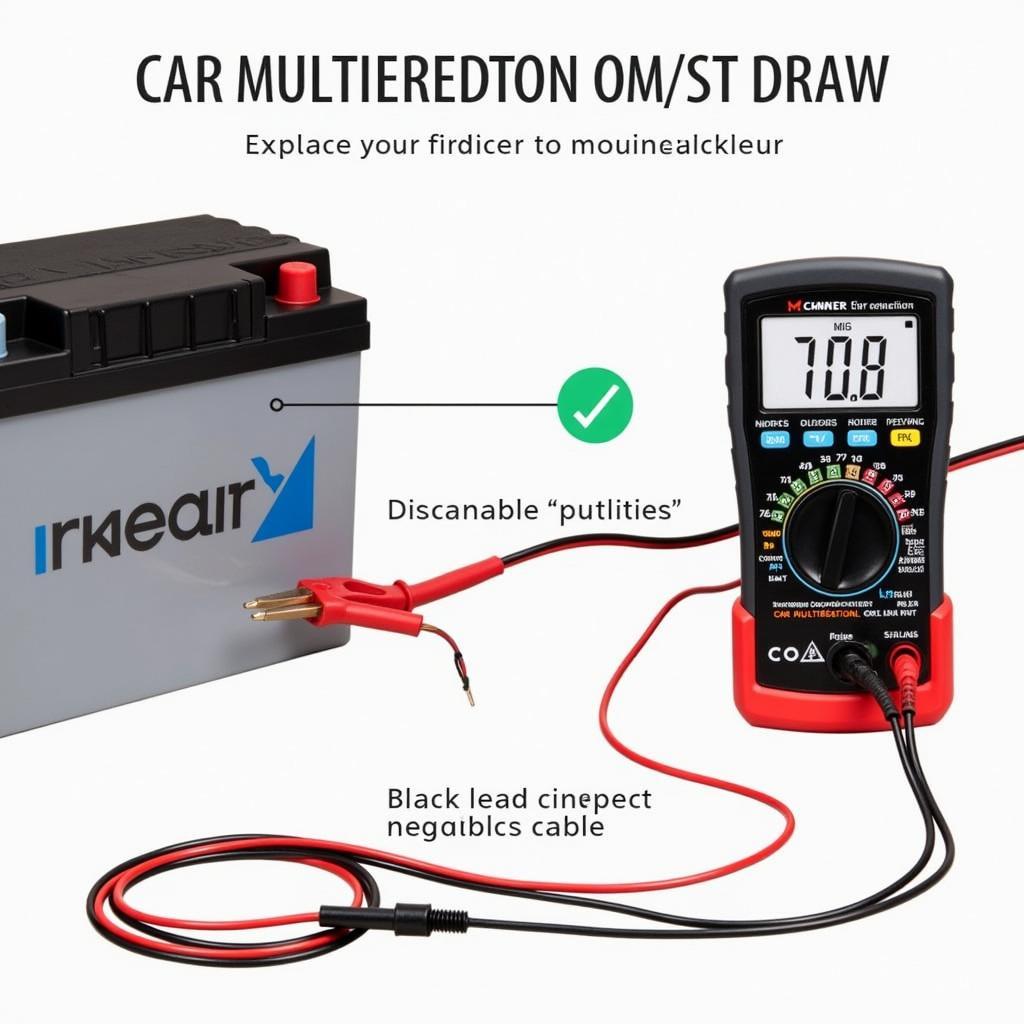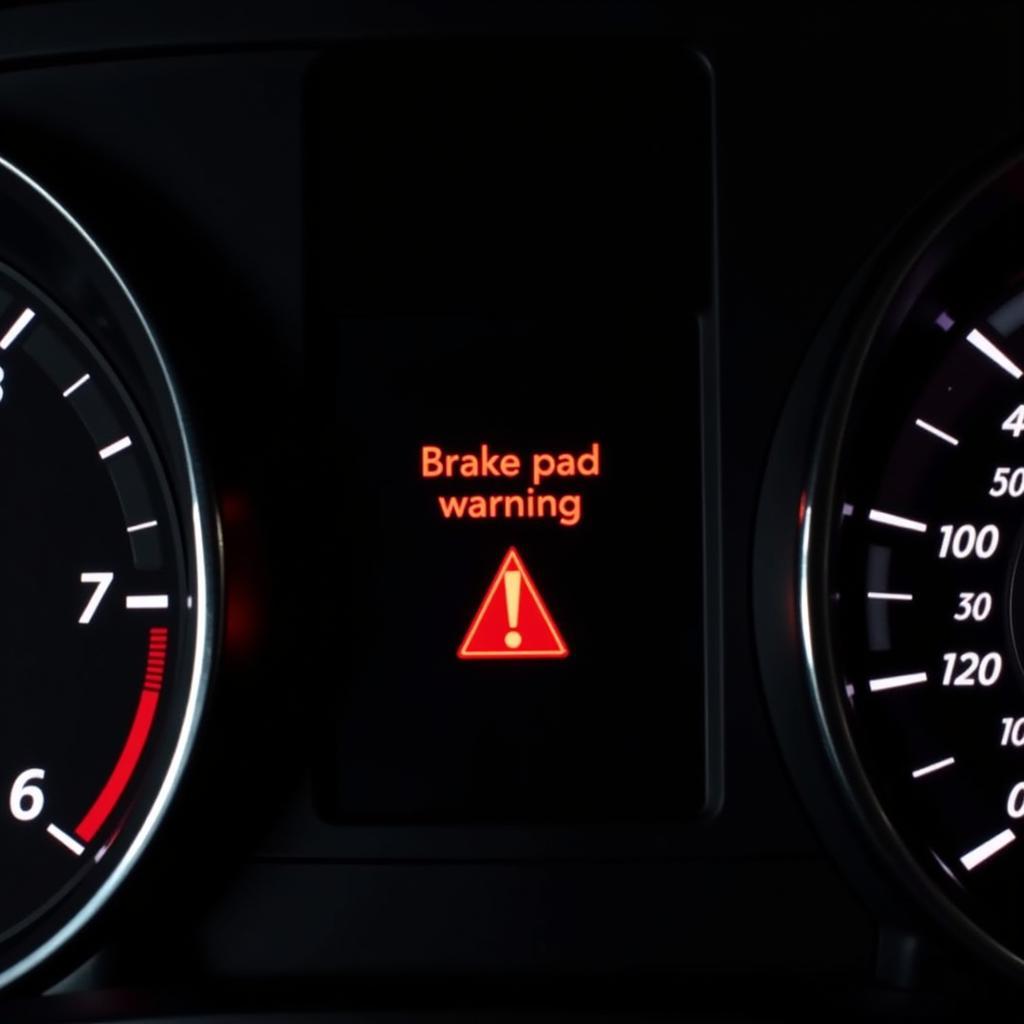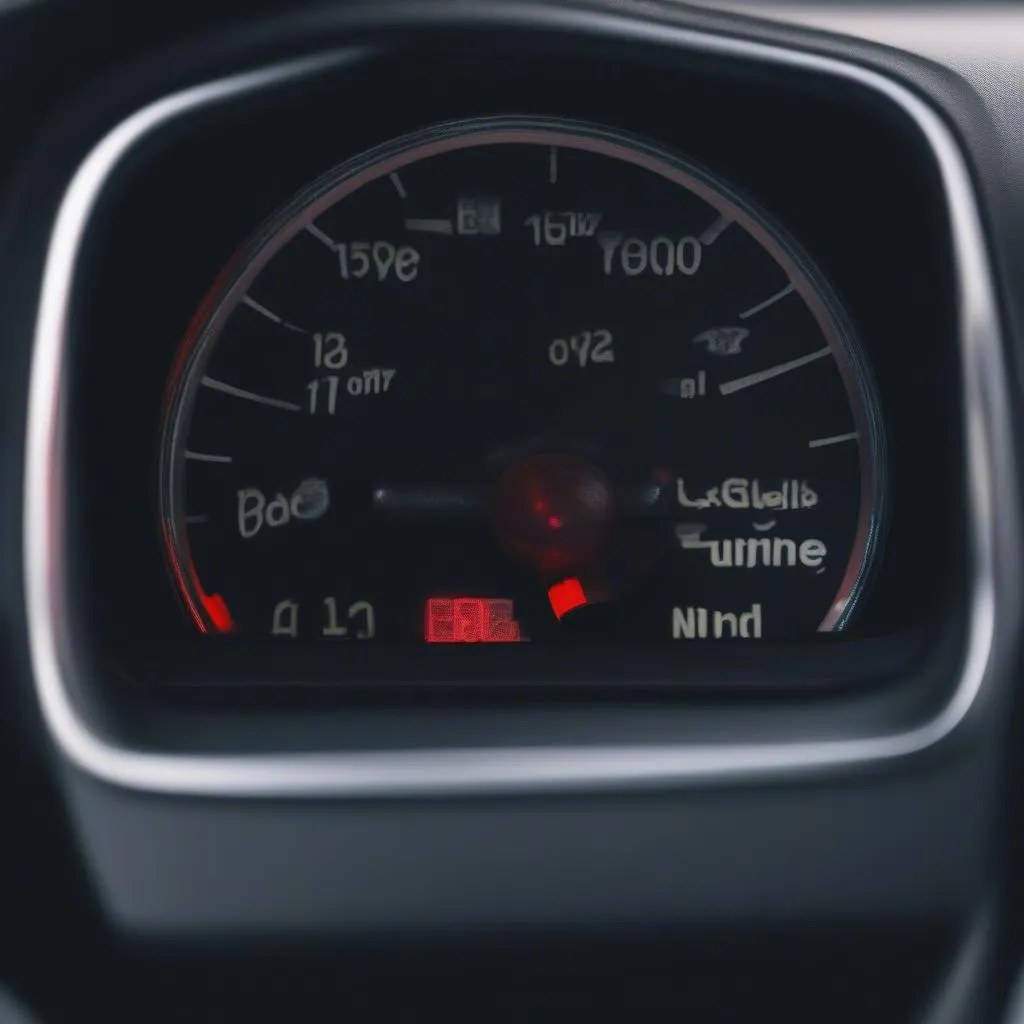A draining car battery is a common problem that can leave you stranded. Learning how to check car battery drain with a multimeter is a crucial skill for any car owner. This guide will equip you with the knowledge and step-by-step instructions to diagnose and pinpoint the culprit behind your battery woes.
If your car battery keeps dying, you’re likely dealing with a parasitic draw. This means something in your car’s electrical system is consuming power even when the ignition is off. Identifying and fixing this drain is essential to prevent future starting problems. This can range from a faulty interior light to a more complex issue within the car’s computer system. By using a multimeter, we can accurately measure the current drain and isolate the problem. 2019 ram 1500 dead battery is a common issue related to parasitic battery drain.
Understanding the Basics of Battery Drain
Before we dive into the how-to, let’s understand what constitutes a healthy current draw. Typically, a car’s electrical system should draw no more than 50 milliamps (mA) when the ignition is off. Anything significantly higher than this indicates a parasitic draw that needs investigation.
What Tools Do I Need?
- Multimeter: A digital multimeter is essential for accurately measuring current.
- Test leads: These connect the multimeter to the battery terminals.
- Owner’s manual: This will help you locate fuses and relays.
 Checking Battery Drain Tools
Checking Battery Drain Tools
Step-by-Step Guide: Check Car Battery Drain with Multimeter
-
Prepare Your Car: Park your car in a safe location, turn off the ignition, and remove the key. Close all doors, lights, and accessories. Let the car sit for at least 30 minutes to allow any modules to go to sleep. This ensures a more accurate reading.
-
Set Up Your Multimeter: Turn the dial to the DC Amps setting (usually denoted by “A” or “mA”). Select the highest amperage range initially and then lower it as needed for a more precise measurement.
-
Disconnect the Negative Battery Cable: Carefully loosen and remove the negative (black) cable from the battery terminal. Important: Ensure the positive cable remains untouched to prevent short circuits.
-
Connect the Multimeter: Connect the red test lead of the multimeter to the negative battery terminal and the black test lead to the disconnected negative cable. This places the multimeter in series with the battery, allowing it to measure the current flow.
-
Observe the Reading: Note the reading on the multimeter. If it’s significantly higher than 50mA, you have a parasitic draw. A vauxhall battery drain can also be diagnosed this way.
 Multimeter Connected to Battery
Multimeter Connected to Battery
Identifying the Culprit
Now that you’ve confirmed a drain, it’s time to find the source.
-
Check the Fuses: One by one, remove each fuse from the fuse box while observing the multimeter reading. If the current drops significantly when you remove a specific fuse, you’ve identified the circuit causing the drain. Consult your owner’s manual to determine which components are on that circuit. Sometimes, a changed car battery and still wont start situation is related to a drain and not a faulty battery.
-
Isolate the Component: Once you’ve narrowed down the circuit, start disconnecting components one by one within that circuit until you find the one causing the drain.
-
Address the Issue: Once you’ve pinpointed the faulty component, you can replace it or repair the related wiring.
“A simple interior light left on can drain your battery overnight,” says automotive electrical expert, David Miller. “But more often than not, it’s a faulty relay or a module that doesn’t go to sleep properly.”
Preventing Future Battery Drain
Regularly inspecting your car’s electrical system can help prevent future battery drain issues. If you notice your car battery discharges quickly, don’t hesitate to investigate. Also, be mindful of aftermarket accessories, as they can sometimes introduce unexpected drains if not installed correctly.
“A proactive approach is always best,” adds Miller. “Periodically checking your battery’s health and ensuring all accessories are functioning correctly can save you from future headaches.” It’s also important to understand if a will a bad alternator drain a battery because this is a related but different issue.
Conclusion
Checking car battery drain with a multimeter is a straightforward process that empowers you to take control of your vehicle’s electrical system. By following these steps, you can diagnose the problem, identify the faulty component, and prevent future starting problems. Regular maintenance and a keen eye for potential issues will keep your car running smoothly.
FAQ
- What is a parasitic draw? A parasitic draw is an electrical current that flows even when the car is off, slowly draining the battery.
- What is a normal current draw for a car? Typically, a car should draw less than 50mA when off.
- What if my multimeter reading fluctuates? This could indicate a loose connection or a component intermittently drawing power.
- Can I check battery drain without a multimeter? While some methods exist, a multimeter provides the most accurate measurement.
- What if I can’t find the source of the drain? It may be a complex issue best diagnosed by a professional automotive electrician.
- How often should I check my car battery’s health? It’s recommended to check your battery every few months, especially during extreme temperatures.
- Can a bad alternator contribute to battery drain? Yes, a faulty alternator can prevent the battery from charging properly, leading to a drained battery.



